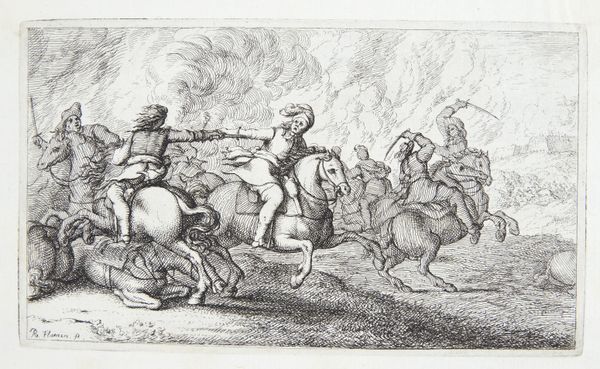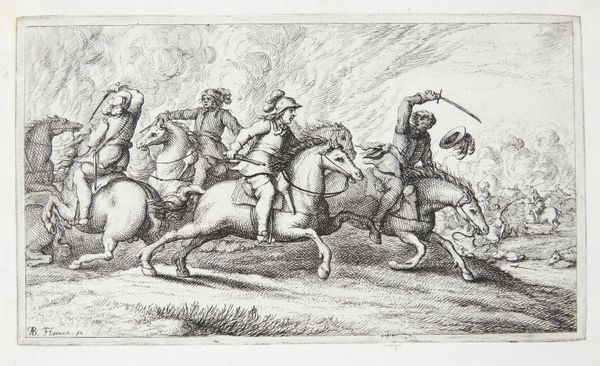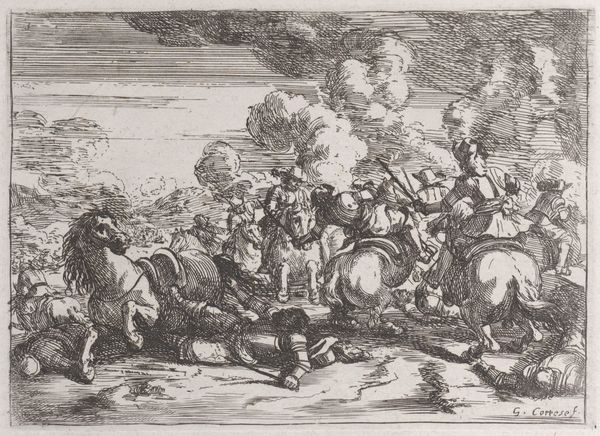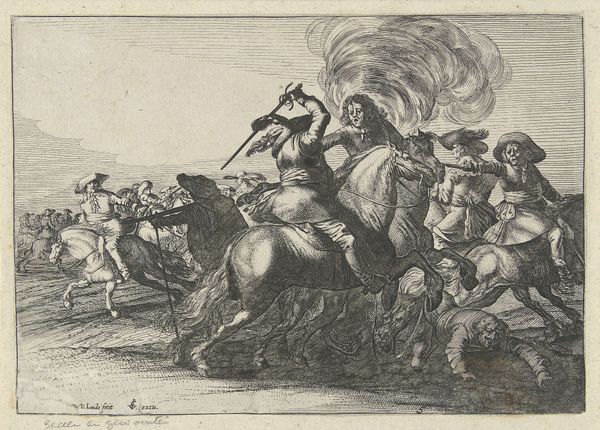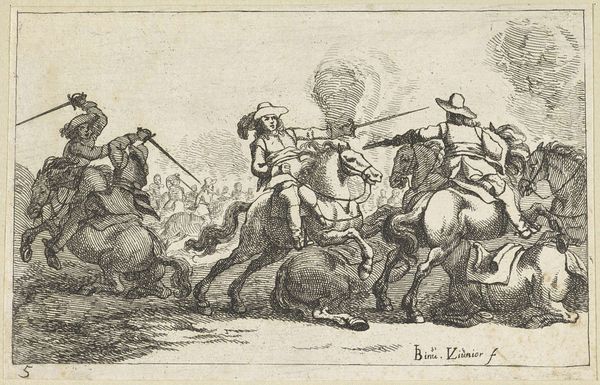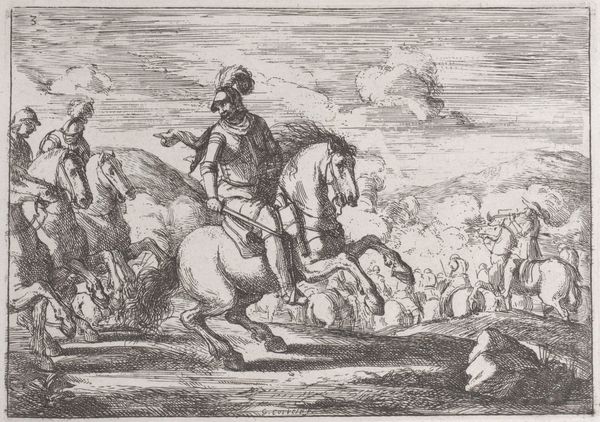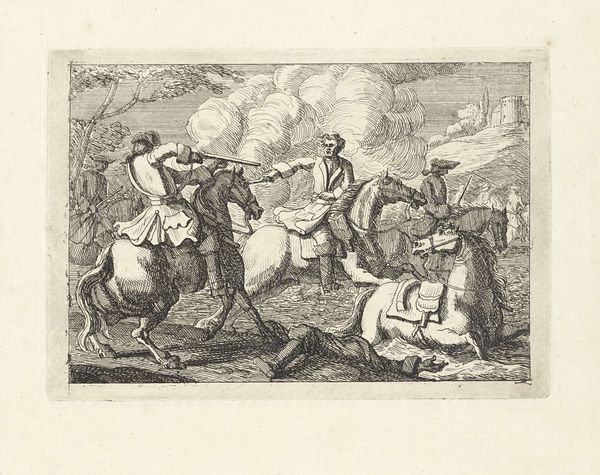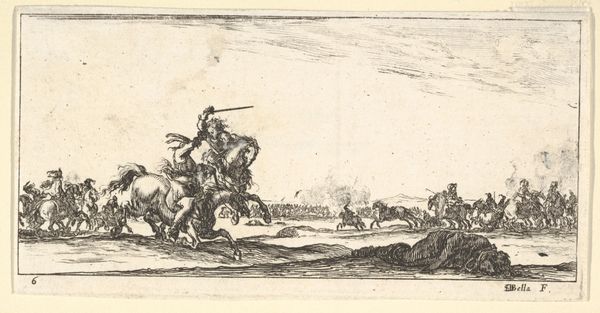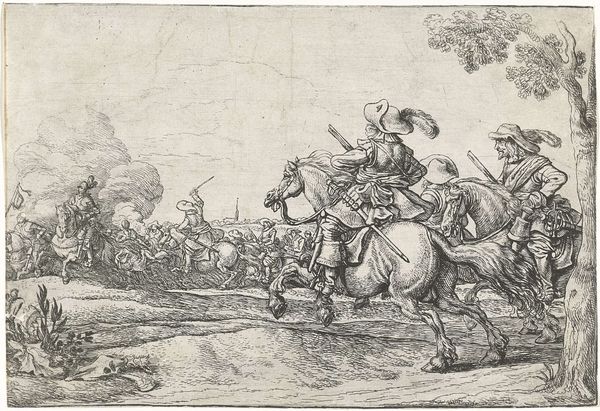
drawing, print, etching
#
drawing
#
ink drawing
#
baroque
# print
#
etching
#
landscape
#
figuration
#
line
#
history-painting
Dimensions: 97 mm (height) x 171 mm (width) (plademaal)
Albert Flamen made this print, "Cavalry Attacking an Enemy," sometime in the 17th century using etching. This method involves coating a metal plate with wax, then scratching an image into the wax with a needle. The plate is then dipped in acid, which bites into the exposed metal, creating incised lines. These lines hold ink, which is then transferred to paper under pressure. The resulting image, teeming with charging horses and musket smoke, depends entirely on the artist's mastery of line. Notice how Flamen uses hatching and cross-hatching to create tone and volume. This was an established printmaking technique, but it also had a wider cultural significance. Prints like this were relatively inexpensive, making images of war and heroism accessible to a broad audience. The labor involved in the printmaking process enabled the wider distribution of these images. So, when you look at this print, consider the materials and processes that made it possible, and how it reflects the social and political context of its time. It's a reminder that even seemingly straightforward images are the result of complex interactions between art, craft, and society.
Comments
No comments
Be the first to comment and join the conversation on the ultimate creative platform.
